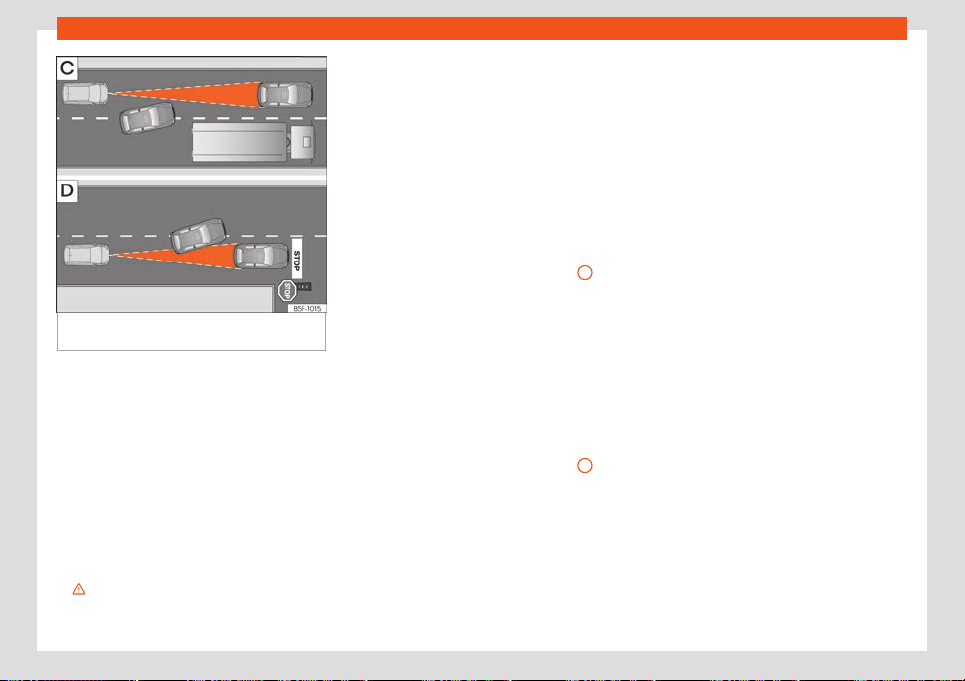Loading ...
Loading ...
Loading ...

Driver assistance systems
Fig. 268 Vehicle changing lanes. One
vehicle t
urning and another stationary.
The ACC has certain limitations inherent to
the syst
em. Cert
ain r
eactions, under cert
ain
cir
cumstances, may be unexpected or come
late from the driver's point of view. So pay at-
tention in order to intervene if necessary.
The following situations require maximum at-
tention:
Starting driving after a stopping phase
(only with automatic transmission)
After a stopping phase, the ACC may begin
driving when the vehicle in front moves off
›››
.
Overtaking
When the t
urn signal lights up bef
or
e the v
e-
hicl
e starts to overtake, the ACC accelerates
the vehicle automatically and thus reduces
the distance from the vehicle in front.
When the vehicle moves to the overtaking
lane, if the ACC does not detect another ve-
hicle in front, it accelerates until it reaches the
programmed speed.
System acceleration can be interrupted at
any time by pressing the brake or moving the
third lever to position
›››
Fig. 264
3
.
Driving thr
ough a bend
When ent
ering or l
eaving some curv
es, the
r
adar sensor may cease to sense the vehicle
driving in front of it, or react to a vehicle in the
adjacent lane
›››
Fig. 267 . The vehicle may
brake unnecessarily or stop reacting to the
vehicle in front. In this case, the driver has to
intervene by accelerating or interrupting
braking by applying the brake or pushing the
third lever to position
›››
Fig. 264
3
.
Driving in t
unnel
s
When driving thr
ough t
unnel
s the radar sen-
sor may be limited. Switch off the ACC in tun-
nels.
Narrow or misaligned vehicles
The radar sensor can only detect narrow ve-
hicles or vehicles that circulate out of align-
ment when they enter its range
›››
Fig. 267 .
In these cases, you should brake as necessa-
ry.
Vehicles with special loads and accesso-
ries
Special loads and accessories of other vehi-
cles that jut out over the sides, backwards or
over the top may be out of the ACC's range.
SEAT recommends disconnecting it.
Other vehicles changing lanes
Vehicles changing lanes a short distance
away from your own can only be detected
when they are within range of the sensors. As
a consequence, the ACC will take longer to
react
›››
Fig. 268 . Brake yourself as neces-
sary.
Stationary vehicles
The ACC does not detect stationary objects
while driving, such as traffic tails or damaged
vehicles.
If a vehicle detected by the ACC turns or
moves over and there is a stationary vehicle
in front of it, the ACC will not react to it
›››
Fig. 268 . Brake yourself as necessary.
»
283
Loading ...
Loading ...
Loading ...